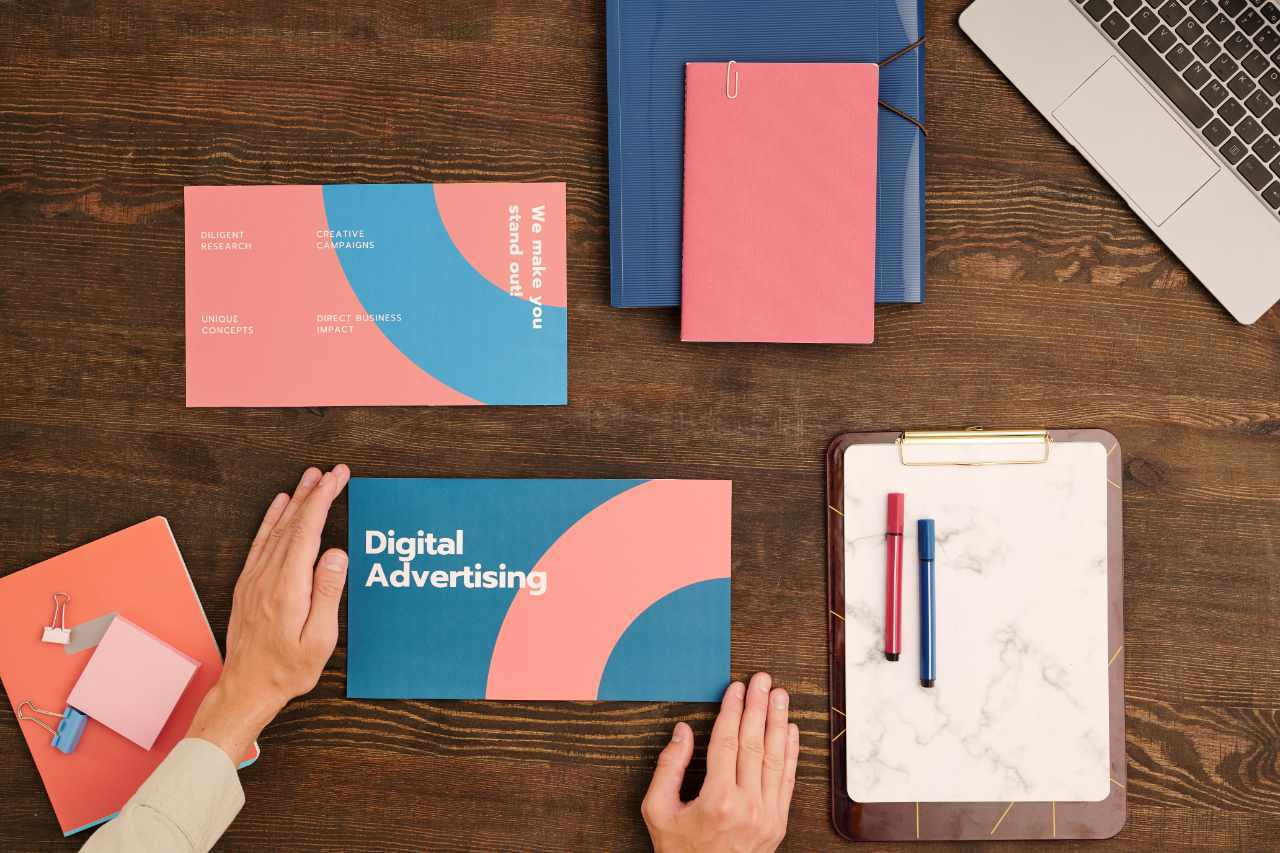Types of Ad Copy
Types of Ad Copy
You may be wondering what is an ad copy? "Digital Ad copy" refers to the copywriting of advertisements—the combination of headline, main body, and call to action written to form an ad. It's daunting to select from various advertising methods or channels. Should you use a video or an infographic? Should you post to Instagram, Google, or YouTube? These are important questions, but by far, the most crucial consideration is what your ad actually says; the words you use underly all of these options and make or break your message.
So, before you blow your advertising budget on the latest trending outlet, make sure you become familiar with writing effective ad copy. There are many types of copy, and each one may differ slightly in the ad copy structure depending on the audience and the platform. It's always best to look at great ad copy examples to discover what they're doing well.
Short-form ad
Short-form ad
Short-form ad copy, or short copy, is often used in pay-per-click (PPC) advertising, such as sponsored social media posts, display ads, and Google ads. Typically made of just a headline and call to action, a short copy must quickly resonate with audiences and, in the least amount of characters possible, compel prospects to take action. Choose clear and persuasive words. As a rule of thumb, focusing on just one key customer benefit helps create a compelling, concise copy.
Category Driven
Category Driven
The most important thing when creating this type of page is to think about what it is supposed to do. The category drive ad copy needs to:
- Get the user excited to purchase the product
- Help them to know you have the product they're looking for
- Explain how to sort through the options if you have a lot of SKUs
- Make them want to engage with the page to find the product
- Click through the image or subcategory and get to conversion
- Answer questions they have about the category, not product-specific
- Not take away from user experience and hide product below the fold
B2B Ad
B2B Ad
B2B copywriting is writing copy to persuade other businesses. It's essential for marketing, sales, or lead generation purposes. B2B copywriting needs to be unique and compelling to stand out from the competition. A lot of B2B copy is geared toward the early stages of the buyer's journey (or the top of the sales funnel if you prefer). This is the phase in which a potential buyer has recognized they have a problem and are starting to think about possible solutions.
Writers create copy for this stage to help brands generate awareness among potentially interested buyers. This might mean writing copy for social media advertisements. The idea is to educate readers about the problems they are facing and entice them to learn more about a solution, one of which may be the company's products.
Google Ads
Google Ads
Many people ask, what is ad copy in google ads? Crafting strong ad copy on Google Ads isn't hard, but to do it right, we have to flex both art and science muscles. We're only given a small number of characters on search engine results pages (SERPs), so we have to make them count. When writing copy, it's important to think about the experience your visitor is having, from query to ad copy to the landing page. A staple best practice of ad copywriting is to include keywords in ad copy to mirror the searcher's query. By parroting back phrases similar to what they searched for, we're telling them that they're in the right place.
Adding keywords to ad copy is fairly simple, but it's important to make sure the keywords are being used well. Don't just stuff in as many as you can. An ad that's saturated with keywords likely doesn't convey any message and could be worse than an ad with no keywords. It's more important to accurately articulate what you're selling. Keyword placement in ads can also play a large role. I highly recommend you test keyword placement within your ads to see what works best.
Facebook Ads
Facebook Ads
If you've ever wanted to learn how to write ad copy for Facebook, you've come to the right place. Facebook advertising is the most effective way to ensure your brand actually reaches new audiences on the platform. A few years ago, Facebook changed algorithms for organic reach, prioritizing personal posts over business content creation. As a result, businesses posting organic content have very low visibility in the Facebook news feed. However, taking advantage of paid ad campaigns or boosting your posts allows you to override that limitation and regain visibility in users' news feeds.
In a Facebook study done by Wordstream, they noticed that businesses with active ad campaigns saw a 77% increase in followers compared to businesses not running any advertising. Followers should not be the most important metric you use to gauge your Facebook advertising's success. However, earning more followers does show you're increasing brand awareness, and it provides an opportunity to drive more new traffic to your website. Some advertisements can break this rule, but at the beginning of your advertising campaign, you should write content to fit the character limits so your text isn't cut off and users can see it all at once.
Facebook ad character limits are:
- 25 characters for a headline
- 30 characters for a link description
- 125 characters for ad copy (primary text)
This is where good writing comes into play. Follow the KISS (Keep It Simple, Smartie) principle. Write simply and use language your audience understands. Don't use big words or try to impress them with industry jargon. Think about what pain points trigger your audience emotionally, lead with that, and present your brand as the solution. The headline is a great place to hook them, the link description shows the solution, and the main ad copy is where you do your persuading.
Always Aim to Provide Value
Always Aim to Provide Value
Write ad copy that speaks to your target consumer. Don't waste your time with unrelated offers. Clicks are great, but qualified clicks are even better. Define your targeted audience before you write your copy. Profile your persona around insight from your audience. Ask yourself:
- What kinds of questions do they ask?
- What are their common pain points?
- What are their personal demographics?
- What kind of content do they consume?
- Ultimately, how does my product or service make his/her life better?
This will help you develop a strong understanding of who your reader is and will allow you to better speak their language.
Improve Your Keyword Strategy
Improve Your Keyword Strategy
You should also use keywords in the body copy of the ad. Think: What words would my ideal persona search for? Crafting ad copy with keywords is a science. You want to balance specific and general keywords while still sounding natural. Specific keywords target your persona, while general keywords target a broader audience. Ensure you have a mix of both.
But—above all else—focus on readability. Don't try to force keywords into your body copy. Stuffing keywords into supporting body copy can make your message unclear. You only have a small window to communicate your message; too many words will cause the audience to lose interest.
We must also recognize all the changes surrounding the impact of keywords. It's less about what and more about why. The intent of your keywords matters. Why is the consumer searching for information? Do they want to make a purchase? Are they looking for a specific website? Think about why someone is searching for your brand and develop keywords based on their intentions.
Establish a Clear Call-to-Action
Establish a Clear Call-to-Action
Remember your call to action. Don't assume people know what you want them to do. Spell out the next steps using simple, straightforward language. Consider your goal when drafting your CTA. Do you want to drive traffic? Collect leads? If you want your audience to download content, include the word "download" in the CTA. If you want them to visit your site, use the word "visit." The best CTAs use strong action verbs like join, subscribe, and launch.
Include Emotional Triggers
Include Emotional Triggers
When it comes to using psychology in your copywriting, nothing spurs people into action like a powerful emotional response—especially online. This principle is what makes clickbait so effective; people read something, experience a strong emotional reaction to it, and then click through. This technique is one of the most powerful at your disposal when writing PPC ad copy.
The emotional responses you can try to provoke will depend on what you're offering and the desired effect you want this emotional reaction to have on your prospects. Negative emotions, such as anger, disgust, and fear, can provoke an incredibly powerful response in the reader, but it can be a challenge to balance this reaction with the rest of your messaging—you don't want the negative emotional reaction to carry over into perceptions of your products or brand.
Similarly, positive emotional triggers, such as affirmation and humor, can be highly effective at prompting people to click on your ads—but they can be tricky to implement well due to the subjective nature of these emotions (especially in the case of humor).
This technique doesn't have to be particularly overt, and you don't necessarily need to outrage potential customers to get their attention. In fact, sometimes, a more subtle copywriting approach can be just as effective, as this ad demonstrates.
Implement FOMO
Implement FOMO
A/B testing your ad copy is a great way to remain agile and see which elements work best. If you're not familiar, A/B testing is a way to compare two things and see which performs better. Consider using different word combinations in separate ads to see which copy is more compelling (use two different headlines or different ad copy). Focus on the benefits of your offer in one ad and the value proposition in another. Run both ads and determine which ad copy is more effective.
If you need some help crafting ad copy, we offer copywriting services and marketing operations consulting to help you dial in your ad copy and increase your ad ROI. Schedule a consultation call with us to get started.
Do A/B Testing
Do A/B Testing
The fear of being left out can be a catalyst to get visitors to your site. Loss aversion is a real psychological force, and using it in your ads is an easy way to drive conversions. The easiest way to implement this online is to use countdown timers that run in real-time. These types of ads work because humans are more motivated by the idea of losing out than gaining something, and by instilling time limits, more people are more likely to click through.
This is also an example of scarcity in action – one of the six principles of persuasion, according to Robert Cialdini (author of Influence: The Psychology of Persuasion). By showing that the sale is going to end soon, you create a sense of scarcity that compels action. With competition online-only getting more intense, writing compelling ads is a powerful tool to drive conversions. Though it takes time and practice, following the above tips will help you get ahead of your competition.







